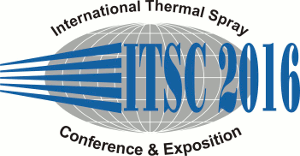
|
4790 |
|
Thursday, May 12, 2016, Yellow River Hall 2:00 PM Power Generation IV |
|
High-performance thermal barrier coatings deposited by high-efficiency supersonic atmospheric plasma spraying |
|
Yu Bai* / Xi'an Jiaotong University, China Yu Wang / Xi'an Jiaotong University, China Lei Zhao/ Xi'an Jiaotong University, China Kun Liu/ Xi'an Jiaotong University, China Jianjiang Tang/ Xi'an Jiaotong University, China Yongxia Kang/ Xi'an Jiaotong University, China |
|
High-efficiency supersonic atmospheric plasma spraying (SAPS) was introduced to fabricate the thermal barrier coatings (TBCs). During the plasma spray process, the in-flight particles melted and broke up through strong coupling with the supersonic plasma jet in thermal and momentum transfer, resulting in the deposited SAPS-particles being significantly smaller in size than either the original feedstock powders or the subsonic particles during the conventional atmospheric plasma spraying (APS). The fragmented particles travelling in a supersonic plasma jet had a lower Reynolds number and lower solidification time, leading to the formation of disk-shaped splats with lower thickness and surface roughness. Transmission electron microscopy (TEM) showed that the average height and width of columnar grains of SAPS-coating were 0.71±0.08 and 0.31±0.04 µm, which was much smaller than 2.10±0.10 and 0.48±0.07 µm of APS-coating. The fracture toughness and bonding strength of SAPS-coatings were as high as 3.7±0.4 MPa |